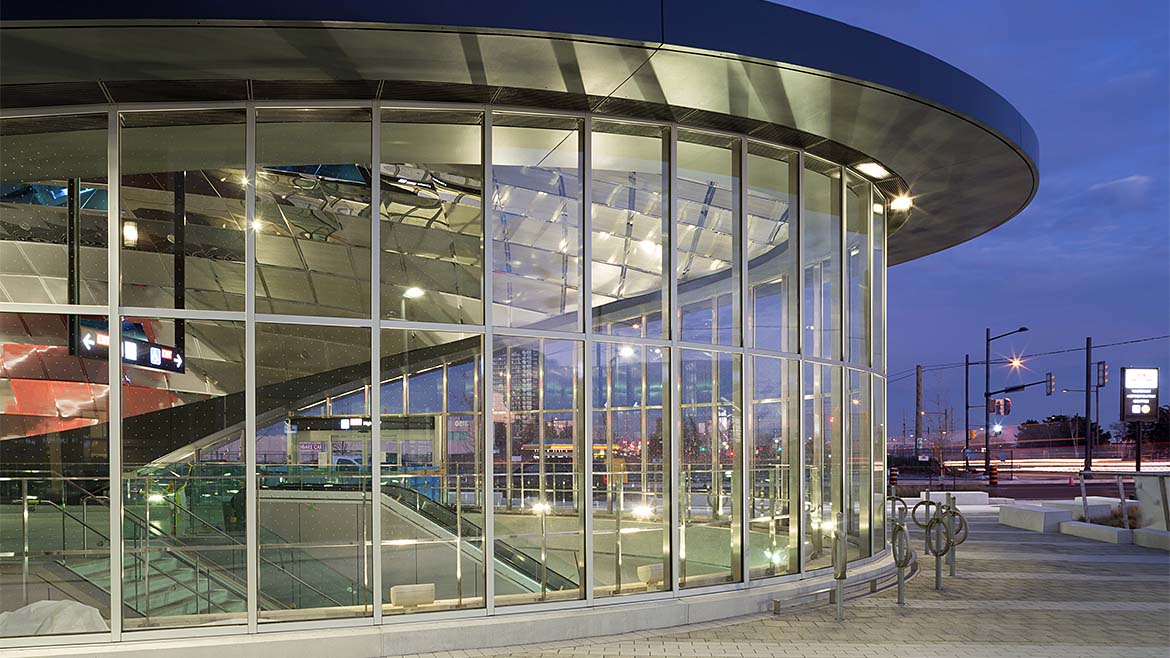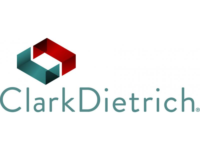The relationship between well-lit spaces and occupant well-being is not a new concept in the building and design industry. Access to daylight can improve mood, enhance morale and support wellness, as numerous studies note. Occupant comfort is one of the many reasons architects integrate design strategies to illuminate spaces through natural daylight, including glazing and fenestrations.
While daylighting is important, glazing can help project teams prioritize designs that give sweeping views of the outside or ones that support occupant privacy while still allowing the passage of light. Further, as demands on functionality and sustainability continue to receive emphasis, navigating the balance between occupant experience, functionality and energy efficiency can often seem to come at the expense of design intent. So how can building and design professionals address all these factors simultaneously?
Modern glazing solutions like steel-framed curtain walls and channel glass assemblies hold the answers. Building and design professionals have used these glazing systems to shape expansive, monolithic exteriors. However, beyond aesthetics, knowing the performance capabilities and differences of these systems can supply designers and contractors with more options for meeting project demands without design compromise or installation complication.

Steel-framed curtain walls support daylighting goals and establish visual connectivity with the external environment.
Steel-Framed Curtain Walls Foster Greater Glazing Spans
Transparent glass curtain walls invite daylight directly into building interiors while fostering connectivity to the outside. In cases where maximizing sunlight and view is a priority, the attention naturally gravitates towards the glazing, considering it comprises a substantial portion of the curtain wall. Nevertheless, the framing material’s role in determining the glazing area is equally crucial.
Between the two popular framing materials, advanced steel-framed curtain wall systems offer distinct advantages over aluminum. Steel assemblies enable greater free spans with smaller profiles than what is possible with aluminum assemblies under the same loading conditions. This is attributed to steel’s strength—which is approximately three times that of aluminum. It also has a Young’s modulus (E) of about 29 million PSI, in contrast to aluminum’s 10 million PSI, which means that steel frames will deflect substantially less than aluminum under similar load conditions.
With these properties, steel-framed curtain walls bear heavier weight. This means they can hold bigger glass lites and achieve heights of up to 40 feet without the need for intermediate support or splicing. Further, with their added strength, steel-framed curtain walls can minimize profile size to bring ample daylight into building interiors and offer a visual connection to adjacent and/or exterior spaces. Building and design teams can leverage these advantages to deliver an expansive building envelope that meets their daylighting goals and establishes connectivity to enhance the user experience.

Translucent, U-shaped channel glass segments enable a sense of privacy while filling space with natural light.
Channel Glass Facilitates Diffused Lighting and Privacy Needs
Although transparent curtain walls can help open up interiors and create bright, well-illuminated spaces, they may not be an ideal option in applications where privacy is a concern. This may be the case in educational institutions and health care facilities. In such instances, channel glass can help block unwanted views into a building while also diffusing light for a soft, glowing, glare-free ambiance. The self-supporting, U-shaped cast-glass channels are translucent and can span up to 23 feet vertically or 13 feet horizontally without interruption. They can also be used in dynamic curved and serpentine configurations.
Channel glass can either be single- or dual-glazed, depending on project criteria. Because vertical single-glazed channel segments do not require intermediate mullions, they can be arranged with openings between them for an effective way to screen views while still allowing for natural air ventilation. Dual-glazed segments, on the other hand, are typically specified when the planks function as part of the building envelope. The nesting channels are mounted in an overlapping fashion to provide extra strength against imposed wind loads.
Additionally, to further help obscure clear vision to varying degrees and enable a sense of privacy, channel glass is available in various color and texture options. This helps building and design teams balance the amount of light that enters a building and the clarity of sight. Beyond privacy, channel glass’ translucency presents practical advantages in improving the building experience by cutting direct sunlight, mitigating distracting shadows and preventing heat build-up. This, in turn, minimizes the need for curtains, blinds or windscreens. As a result, building and design teams can deliver cleaner building façades and light-filled spaces without compromising privacy.

Channel glass creates a soft, glowing ambiance on the inside as well as the outside.
Prioritizing Energy Efficiency through Glazing Solutions
Both steel-framed curtain walls and channel glass façades provide light-filled spaces to benefit occupants. However, these capabilities can also contribute to more sustainable buildings. Studies suggest that daylighting and daylight harvesting systems can achieve average lighting energy savings ranging from 24 to 80 percent, varying with project location and design. Balanced and well-designed glazing systems can be a part of a comprehensive strategy to reduce energy consumed by lighting, as well as mechanical cooling systems.
In addition to filling interiors with light, both channel glass and steel curtain walls can play a larger role in a building’s energy-saving strategy. When using curtain walls, the glass lites can be coated with low-emissivity coating to mitigate heat transfer between interior and exterior spaces. In places where heat transfer is a concern but connectivity and light are equally important, building and design teams can recommend specifying double- and triple-glazing to offset solar heat gains.
That said, adding more lites increases the weight a frame must carry. While the added load can lead to increased profile sizes in conventional framing materials, steel’s strength allows the framing systems to support glazing infills up to 3 inches thick and total weights of up to 25 pounds per square foot. This exceeds the typical thickness and weight of triple-glazed units. Further, steel’s thermal conductivity is 74 percent lower than aluminum and can be used without traditional thermal brakes. These factors, paired with narrow steel profiles, significantly reduce the total metal area and corresponding heat conduction, resulting in a thermally sound interior.
Like curtain wall glazing, channel glass can also be coated with high-performance coatings, which can help reduce its solar heat gain coefficient to 0.45. Building and design teams can employ a dual-glazed channel glass system on the building exterior for enhanced thermal performance and structural integrity. In such a configuration, the cast-glass channels are laid in an overlapping manner, creating air gaps. These gaps can be filled with a nearly translucent aerogel insulation to further bolster thermal comfort, potentially achieving U-values as low as 0.19 while still allowing desired illumination.
In fact, depending on the product and its application, both glazing options can contribute to a number of LEED credits, such as “daylight and views” and “optimize energy performance.”
Championing Design, Experience and Performance
Navigating the complexities of balancing a building’s performance goals and design is indeed a challenge. Yet, embracing the diverse range of glazing solutions available today offers an exciting opportunity for building and design teams to push boundaries and redefine what’s possible in building construction. By harnessing these innovative technologies thoughtfully, building teams can successfully integrate performance and sustainability into their projects.






Report Abusive Comment